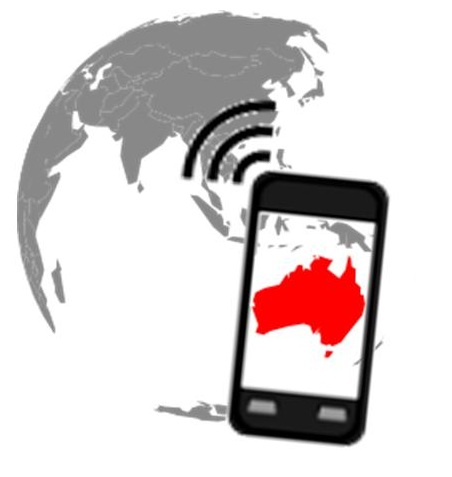Moreover, the prices in the United States are going up, even though they’re dropping around the world.
According to the 2014 International Market Communications Report, the latest mobile trends show that people in the United States are paying more for their wireless service than any other country studied within this report.
What’s more, unlike the majority of other countries that were examined, the prices are only going up.
The report was issued by as UK regulator – the Office of Communications, also called Ofcom – in order to examine mobile trends such as the prices being paid by subscribers in 18 total countries around the world. The analysis measured the average revenue on a monthly basis per mobile connection. The 18 countries spanned six different continents. What the report showed was that in 2013 in the United States, the average mobile customer paid approximately $47 per connection.
That amount was higher than the amount paid by customers in any other country studied by the mobile trends report.
 Customers in Japan were the only ones who paid anywhere near that amount, last year. The majority of the countries surveyed in the report saw a monthly bill that was lower than $31 for their wireless services. Mobile subscribers in Poland, Brazil, Russia, China, India, and Nigeria all paid an average monthly bill that was less than $16.
Customers in Japan were the only ones who paid anywhere near that amount, last year. The majority of the countries surveyed in the report saw a monthly bill that was lower than $31 for their wireless services. Mobile subscribers in Poland, Brazil, Russia, China, India, and Nigeria all paid an average monthly bill that was less than $16.
Among the reasons that helped to explain why customers in the United States were paying more for their monthly mobile service than anyone else was that they were also among the highest data users when compared to other nations. Cisco data has revealed that the average mobile consumer in the U.S. used an average of 1.3 GB of data every month, last year. Comparatively, Europeans were using an average of 700 MB per month, last year. This represented under half of the usage by Americans. African and Middle Eastern customers were using an average of only 185 MB per month during 2013.
That said, while higher data usage helps to shed some light on why the mobile trends are for higher prices in the United States, what wasn’t explained was why the U.S. was among the few countries where the cost of mobile service was not falling.
The AIMIA has now released its tenth annual index which has provided considerable insight into tech trends.
The Tenth Annual Australian Mobile Phone Lifestyle Index has now been released by the AIMIA, which has allowed the industry to gain a considerable amount of insight with regards to the preferences and behaviors of consumers in Australia with regards to mobile technology.
This year, they discovered that between smartphone and televisions, Australians prefer their cell phones.
In fact, among the respondents to this year’s study, 61 percent said that they would choose their mobile technology – specifically, their smartphone – over a television. That said, 70 percent still said that they preferred their cars. Moreover, when the respondents to this survey were offered the choice from among various types of tech, about 50 percent said that their preference was their smartphone, 34 percent still preferred their laptop or desktop, and 16 percent wanted their tablets.
The survey also looked into a range of different overall behaviors with respect to the use of mobile technology.
 For example, about 30 percent of the respondents to the survey in Australia said that they brought their mobile devices to bed, where they would use them, and that they also watched television there. Another 39 percent said that they always used their smartphones while they were traveling on public transportation such as buses.
For example, about 30 percent of the respondents to the survey in Australia said that they brought their mobile devices to bed, where they would use them, and that they also watched television there. Another 39 percent said that they always used their smartphones while they were traveling on public transportation such as buses.
A surprising 34 percent of respondents had only a mobile phone as their telephone service and did not subscribe to a landline telephone.
When it came to shopping behaviors, the laptop and desktop continued to reign supreme, as 93 percent of PC owners had made a purchase over their computers. Comparatively, among tablet owners, 73 percent had made a purchase, and among smartphone owners, 58 percent had made a purchase over their devices.
Slightly more than one in three respondents stated that they did not wish to receive personalized ads on their mobile technology or computers. This is interesting as it is in direct opposition to the current trend that is growing with respect to the personalization of mobile marketing and advertising through the use of various kinds of messaging.
 Customers in Japan were the only ones who paid anywhere near that amount, last year. The majority of the countries surveyed in the report saw a monthly bill that was lower than $31 for their wireless services. Mobile subscribers in Poland, Brazil, Russia, China, India, and Nigeria all paid an average monthly bill that was less than $16.
Customers in Japan were the only ones who paid anywhere near that amount, last year. The majority of the countries surveyed in the report saw a monthly bill that was lower than $31 for their wireless services. Mobile subscribers in Poland, Brazil, Russia, China, India, and Nigeria all paid an average monthly bill that was less than $16.
 For example, about 30 percent of the respondents to the survey in Australia said that they brought their mobile devices to bed, where they would use them, and that they also watched television there. Another 39 percent said that they always used their smartphones while they were traveling on public transportation such as buses.
For example, about 30 percent of the respondents to the survey in Australia said that they brought their mobile devices to bed, where they would use them, and that they also watched television there. Another 39 percent said that they always used their smartphones while they were traveling on public transportation such as buses.